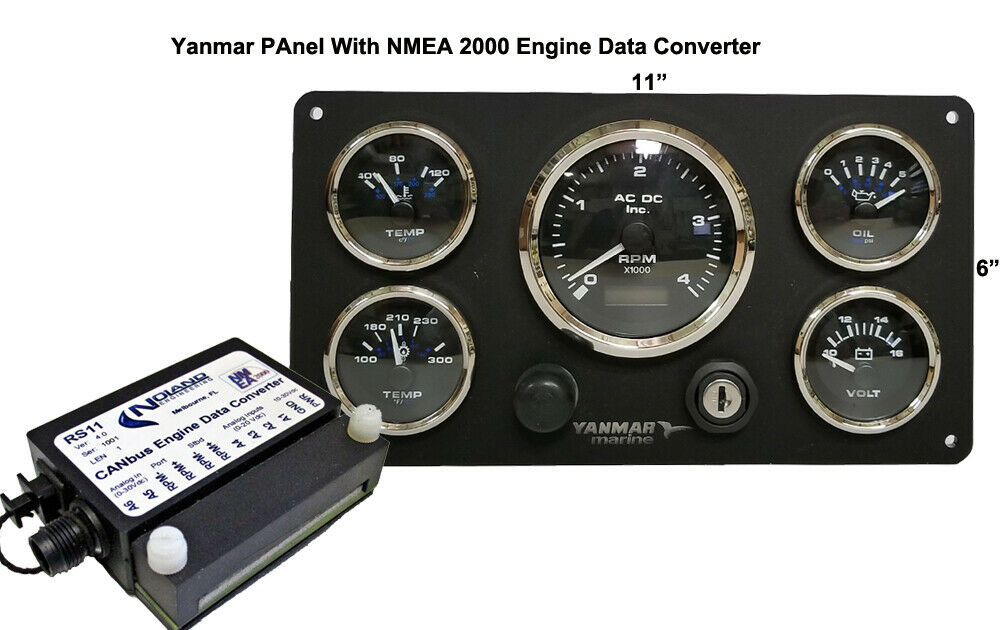

>Is it better to go with field attachable cabling or pre-built N2K cabling? That seems low to me, I am assuming this is because the HDS also has a separate power hook-up. The HDS does indeed feed out the GPS data from it's built-in GPS onto the N2K network. I like the HDS-8 for small sailboats (or actually, any without a generator) as they use little power, less than any other up-to-date MFD.
Macenc nmea 2000 free#
N2K Builder Files and network pictures can be found here: īen, feel free to repost them on this forum, I just couldn't figure out how. What is the best way to go from the N2K to 0183 to USB for Laptop? Could I wire the digital yacht 0183 USB to the 0183 wire on the HDS-8M and expect the HDS-8M to feed N2K data over to the 0183 port then to the laptop? Is it better to go with field attachable cabling or pre-built N2K cabling? If I end up going with the Furuno 5001 as my wind sensor, will it feed the data onto the N2K network via the daisy chained FI-501? The airmar DST-800 claims a LEN of 4 () while the Maretron DST100 claims a LEN of 1 (). I plan on using the HDS-8M as the GPS sensor, making the assumption that it will feed the GPS data onto network to be read by my Mac laptop running MacEnc. I'm planning on going with a Lowrance HDS-8M chart plotter but am open to options.

I've already decided on/purchased the FI-501 Wind and FI-503 Digital and have a Airmar DST-800 installed in the vessel (N2K version, not hooked up to anything right now). Ensure this is the smartest design for my application Decide between a Airmar PB 200 on the mast or a Furuno FI-5001 Wind Sensor (Would go with FI-5001 to reduce cost) Ensure that it's expandable in the future (using mid-cable as backbone) Design out any unnecessary components for cost savings I've created two designs in N2K Builder and would love your feedback on them. Currently it has no working electronics, so I don't have to utilize any old or proprietary systems.
Macenc nmea 2000 software#
Despite good support from both companies, he didn’t get that one solved before the potential owner of this system-who already has a very nice one, but wants MARPA and AIS-decided to put the R&D on hold. At any rate good geek fun was had, and I also became acquainted with Firma Mats Kagstron’s AIS Simulator (source of many other NMEA software products) and Effective Solutions’ combined AIS and NMEA Simulation, both of which I’d like to investigate further.I am planning for the installation of a N2K network aboard my Aloha 34 sailboat.


Regardless, John got all the data-routes and waypoints included-running around quite well except for one little MacENC-waypoint-to-NavNet glitch. There was also a Keyspan serial-to-USB converter plus lots of wires and alligator clips involved, which made me feel better about some of my test setups, and may account for the embarrassed portion of that smile.
Macenc nmea 2000 Pc#
John was stressing the whole kit by inputing GPS either from the laptop running Nema Talker or a Garmin 192, plus he had an AIS simulator running on a PC in the next room and connected to the Mini via Bluetooth, and a radar simulator that Furuno apparently supplies to dealers. Second would be how unusual the system was, closeup here, a Mac Mini running MacENC (review link here) and talking to both a Furuno RD-30 and a NavNet vx2, black box model.
Macenc nmea 2000 upgrade#
There were several reasons for that grin on John Gass, Electronics Manager at Wayfarer Marine, the most obvious being that he was beating a particularly nasty February Maine day by testing a possible upgrade system in his shop.


 0 kommentar(er)
0 kommentar(er)
